











PURPLE PLANTS



PICTURE THIS: NOTHING BUT FLOWERS


GREG ILES IS BACK
















Plan to go to the polls! REGISTER. You have the POWER to BE INFORMED. You have the POWER to VOTE. You have the POWER to VOTE MS Co-ops










REGISTER. BE INFORMED VOTE.
















PURPLE PLANTS



PICTURE THIS: NOTHING BUT FLOWERS


GREG ILES IS BACK
















Plan to go to the polls! REGISTER. You have the POWER to BE INFORMED. You have the POWER to VOTE. You have the POWER to VOTE MS Co-ops










REGISTER. BE INFORMED VOTE.



Without patting ourselves on the back too much, Today in Mississippi does a lot of things well.
Our first mission is to inform members of our cooperatives about the latest news regarding their local co-ops. I think we fulfill that primary purpose very well. But our statewide magazine is also a place where members go to read about the people and places that make Mississippi such a special place to live.
I know that we entertain our readers with those feature stories and photographs because your feedback has been so positive over the years.
In the spirit of those kinds of stories, this month’s cover story is a great reminder that Mississippi is filled with special places to visit within our state lines — hidden gems in some cases, so to speak.
When most people think of the origins of Coca-Cola, Atlanta and the state of Georgia spring to mind. The birthplace of the taste of Coke is, indeed, Atlanta, where a pharmacist created the drink’s flavorful syrup in 1886.
But it was a candy store owner in Vicksburg who first bottled Coca-Cola in 1894.
Mississippian Joseph A. Biedenham was the first to bottle Coca-Cola and ship it to rural areas so it could be consumed outside of soda fountains.
Biedenham’s story and the museum dedicated to his achievement is definitely a special place to visit for a day trip or a weekend getaway.
I’m not sure how many Mississippians know about the Museum of Coca-Cola History and Memorabilia in Vicksburg, but hopefully more folks are aware now.
We love to spotlight the special places in our state, and with our July 2024 cover story, we’ve done just that.
We hope you enjoy the issue.

by Michael Callahan
Executive Vice President/CEO Electric Cooperatives of Mississippi











Send us photos of your front porches. You and your family or friends can be on them, or just shoot us photos of your front porch solo. The photos must be highresolution JPG files of at least 1 MB in size. Please attach the photo to your email and send it to news@ecm.coop. Each entry must be accompanied by photographer’s name, address, and co-op.
SUBMISSION DEADLINE: Aug. 30. Select photos will appear in the October 2024 issue.







Purple
Storm
Natchez novelist Greg Iles
A
The Official Publication of the Electric Cooperatives of Mississippi
Vol. 77 No. 7
OFFICERS
Ron Barnes - President
Brian Hughey - First Vice President
Brian Long - Secretary/Treasurer
Michael Callahan - Executive Vice President/CEO
EDITORIAL STAFF
Lydia Walters - VP, Communications
Steven Ward - Editor
Chad Calcote - Creative Director
Kevin Wood - Graphic Designer
Alan Burnitt - Graphic Designer
Courtney Warren - Graphic Designer
Chris Alexander - Member Services Coordinator
Steve Temple - Social Media Director
Kendle Dean - Administrative Assistant
EDITORIAL OFFICE & ADVERTISING
601-605-8600
Acceptance of advertising by Today in Mississippi does not imply endorsement of the advertised product or services by the publisher or Mississippi’s electric power associations. Product satisfaction and delivery responsibility lie solely with the advertiser.
• National advertising representative: American MainStreet Publications, 800-626-1181
Circulation of this issue: 488,978
Non-member subscription price: $9.50 per year.
Today in Mississippi (ISSN 1052-2433) is published 12 times a year by Electric Cooperatives of Mississippi Inc., P.O. Box 3300, Ridgeland, MS 39158-3300, or 665 Highland Colony Parkway, Ridgeland, MS 39157. Phone 601-605-8600. Periodical postage paid at Ridgeland, MS, and additional o ce. The publisher (and/or its agent) reserves the right to refuse or edit all advertising. The magazine is published for members of subscribing co-ops. The magazine is a bene t of membership.
POSTMASTER: Send all UAA to CFS. (See DMM 507.1.5.2) NON-POSTAL AND MILITARY FACILITIES: send address corrections to: Today in Mississippi, P.O. Box 3300, Ridgeland, MS 39158-3300

www.facebook.com/TodayinMississippi
www.todayinmississippi.com

Coke bottles from the past and present at the Museum of Coca-Cola History and Memorabilia. Photo by Chad Calcote.
The 1964 presidential campaign got attention among electric cooperatives like no other because President Lyndon Johnson was a champion of rural electrification while his challenger, Arizona Senator Barry Goldwater, had a 92% unfavorable voting record on co-op issues.
Goldwater publicly stated that co-ops had “outlived their usefulness in most states.” He called for selling the Tennessee Valley Authority “even if the government could get only one dollar for it.”
“Had he been successful in his bid for the presidency, he would have wrecked our program,” NRECA General Manager Clyde T. Ellis wrote in his 1966 book “A Giant Step.”
A red flag was raised in 1960 when Goldwater published “The Conscience of a Conservative,” his manifesto on conservative principles in contemporary politics. When electric co-op leaders read that “the government must begin to withdraw from a whole series of government programs,” including “public power” and “agriculture” on a “rigid timetable,” they knew the Arizona senator was talking about the federal power marketing agencies and the Rural Electrification Administration.
Meanwhile, Johnson “had a long record of support for our program,” and his running mate, Minnesota Senator Hubert Humphrey “had led us to some of our most vital victories in Congress,” Ellis wrote.
If there was lingering doubt that election year about where Goldwater and the Republican leadership stood on rural electrification, it was eliminated when the National Observer newspaper reported that the candidate’s advisors named only one thing when asked for examples of what the candidate might eliminate if he were president: the Rural Electrification Administration.

Investor-owned utilities loved the book. Ellis noted that one of them, Virginia Electric Power Company, bought 500 copies and distributed them to high school libraries in Virginia, West Virginia, and North Carolina.
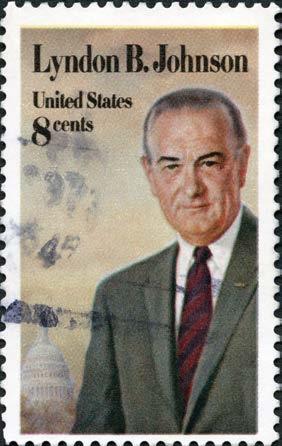

Goldwater and Ellis saw the world very di erently. Sparring at a 1956 Senate hearing, the Arizonan argued that it made no di erence whether the federal government or investor-owned utilities developed hydroelectric power on the nation’s rivers.
Ellis and asserted that the “natural resource of falling water … belongs to the people.” Private companies and their stockholders should not be allowed to profit from it over not-for-profit companies like co-ops and municipal utilities.
“To people who had dedicated their lives to the rural electrification program, it was unthinkable that anyone with such views might become president,” Ellis wrote. “With a grim determination, that united us as never before – Democrats and Republicans, liberals and conservatives – in a massive e ort to be certain he did not carry the rural areas.”
NRECA, the National Farmers Union, the Cooperative League of the U.S.A. and other like-minded groups and individuals organized Rural Americans for JohnsonHumphrey, and by September there were chapters in 40 states. Volunteers distributed more than three million pieces of campaign literature, according to Ellis. And “well over 2,000 radio tapes were prepared and sent to stations throughout the country, along with many TV tapes, and they were widely used.”
County and precinct chapters did everything from hand out JohnsonHumphrey bumper stickers to putting on fundraising dinners.
“The locals did the actual campaigning with the voters and got out the vote on Election Day,” Ellis wrote. Many of those locals were electric co-ops members, directors, and employees.
It worked. Johnson won 61% of the popular vote in a landslide victory in which Goldwater was awarded only six states.
Most newspapers and magazines noted the strength of the rural vote in their election round-up stories, and many singled-out Goldwater’s opposition to rural electrification as a decisive factor. – NRECA















Mabel Murphree’s Tupelo garden has an impressive variety of plants, but what really caught my attention when I visited were her purple blooms.
One of the first plants that stood out to me was the chive, typically known as an herb but also a great pollinator plant.
The beauty of chive flowers lies in their small, star-shaped blossoms which are a delightful shade of purple.
These flowers grow in dense, spherical clusters made up of numerous individual flowers connected by slender stems. Typically arranged in a globeshaped formation atop a single, tall stalk, the flowers rise above the foliage of the chive plant to give depth to the garden or landscape.
I found another of my favorites, Bachelor’s buttons, in Mabel’s garden.

beautiful blooms in both dark and light purple. Flowers may come in single or double form, making them a great addition to a garden. Once planted, they reseed freely, allowing you to enjoy their beauty year after year. Bachelor’s buttons are easy to grow and require minimal care. They do best in a full-sun location, but can tolerate some shade. They are perfect for adding a pop of color to a garden.






Bachelor’s buttons, or cornflowers, are classic annual plants that are widely known as reseeding pollinator plants. They produce




I was also intrigued in Mabel’s garden by a plant with striking purple blooms that I don’t often encounter — the Camassia.
the Camassia.
Camassia are perennials that produce clusters of star-shaped flowers arranged on long, slender stems. These spike-like stems rise above the foliage of the plant.
Camassia are known for their showy looks, which makes them a favorite among gardeners and florists alike. Additionally, Camassia blooms come in di erent shades of purple, from deep violet to lavender, adding depth and variety to a garden.


I think adding plants with purple blooms to your landscape can be a great way to create a striking and unique display that makes your garden the envy of the neighborhood. By using these plants, you can create a beautiful display that lasts for years to come.


Ajuga covered the ground in a shaded area of Mabel’s gardens. Ajuga, also known as bugleweed, has spikes of small, purple, tubular-shaped flowers. The leaves are often glossy, and vary in color depending on the species and cultivar, ranging from green to bronze, purple, or variegated.
Ajuga is a pretty and low-maintenance plant that is perfect for adding natural beauty to shady areas of the landscape.
I think adding plants with purple blooms to your landscape can be a great way to create a striking and unique display that makes your garden the envy of the neighborhood. By using these plants, you can create a beautiful display that lasts for years to come.

by
Southern Gardening columnist Dr. Eddie Smith, a gardening specialist and Pearl River County coordinator with the Mississippi State University Extension Service, is an internationally certified arborist, Produce Safety Alliance certified trainer, and one of the developers of the Mississippi Smart Landscapes program that encourages the use of native plants in the landscape.




















For millennia, the Mississippi River deposited uncountable volumes of silt into the Gulf of Mexico, turning the bottom into a giant mudflat largely devoid of life. That silty flow also created the beaches and barrier islands along the Mississippi coast. Except for oysters, few natural hard spots existed in Mississippi waters.
Hard spots create entire marine ecosystems from the smallest organisms to huge fish. Algae grows on hard surfaces. That provides food for small creatures. Reefs give cover to crabs, shrimp, baitfish, and other animals. Predators come to reefs to hunt prey.
“Each reef is a fish oasis,” explains Sonny Schindler of Shore Thing Fishing Charters in Bay St. Louis. “I wish the state would line the entire coast with artificial reefs because they are such good places to fish.”
The Mississippi Artificial Reef Program o cially began in 1999, but the state placed a few old automobile bodies near the barrier








islands as far back as the 1960s. Nobody likes to see a hurricane approaching, but good things can spring from disaster. The 21st century hurricanes, particularly Katrina in 2005, provided the state with tons of debris. Mississippi recycled much of it into artificial reefs for fish habitat, bringing life from destruction.
“We have captured some material after hurricanes and deployed that material to create several artificial reefs,” Travis Williams, the Mississippi Department of Marine Resources Artificial Reef director, said. “When we have a natural disaster, we try to make something positive out of it.”
Katrina demolished the Highway 90 bridge that spanned the pass connecting Back Bay, also called Biloxi Bay, to Mississippi Sound. Now, entire concrete spans from that old bridge form Katrina Key just outside the pass. Also called Katrina Reef, the structure holds speckled trout, redfish, sheepshead, and other fish.


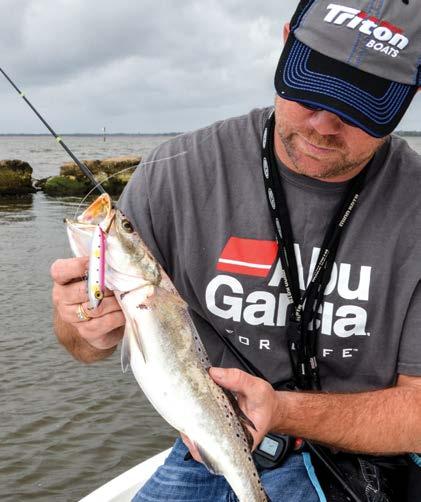

We catch fish o Katrina Reef all year long, but the species vary according to the season. The reefs give cover to baitfish. Once baitfish get around the reefs, everything else follows
“We catch fish o Katrina Reef all year long, but the species vary according to the season,” says Robert Brodie of Team Brodie Charters. “The reefs give cover to baitfish. Once baitfish get around the reefs, everything else follows.”
Katrina also destroyed the Hancock County Jail in the town of Bay St. Louis. Now, rubble from that correctional facility became Jailhouse Key near Waveland. Some of that rubble also became Pass Christian Key. Storms also provided materials for many other structures.
Besides storm damage, Mississippi also obtains various materials from road repairs, demolished buildings, and other renovation or construction projects. These “secondary use materials” include things like old concrete culverts that make outstanding fish habitat. Most people just want to get rid of the old material and would rather donate it to the state to put it to good use than pay to haul it o to a landfill.
Today, numerous artificial reefs ranging from a few limestone blocks to entire sunken ships dot the Mississippi coast and o shore waters. Many exist where anglers in small boats, even kayaks, can reach them. In some places, wading anglers fishing the coastal beaches can fish the reefs.







For information about Mississippi reefs, see www.dmr.ms.gov/marine-fisheries/artificial-reef.

and
by John N. Felsher
than
of




















by Steven Ward
Natchez author Greg Iles is not Penn Cage.
It might be hard for readers to reconcile that fact with his new book, “Southern Man,” his seventh novel featuring protagonist Cage, a former Texas prosecutor who moves back to his hometown of Natchez to raise his daughter after the death of his wife.
The Cage story started with his 1999 novel, “The Quiet Game.”
By the time the reader picks up “Southern Man,” Cage and Iles almost seem as one.
Both men grew up and live in Natchez. Both men are published authors. Both lost part of their legs in car accidents. Both men have a daughter that works in Jackson as an attorney. Both men watched their mothers die of a rare blood cancer. Both men su er from multiple myeloma, an incurable blood cancer – the same cancer that killed their mothers.
“Southern Man,” I was facing a very di erent kind of challenge,” Iles told Today in Mississippi during a recent interview.
“One, I was moving Penn ahead 18 years in time to 2023. Two, by now most of your readers know that at age 36, I was diagnosed with an incurable blood cancer, something I chose to keep secret for most of my career. While I was writing “Southern Man,” my mother was diagnosed with the same cancer, and I had to watch her die long before I finished the book. During this prolonged e ort, I found it impossible to leave those unique and remarkable circumstances out of the process. It’s as though the intensity of those events finally caused Penn and I to merge into the same character at last.”


“From the beginning, Penn and I shared a certain number of character traits, but he was never completely based on me. But in
Iles, 64, was asymptomatic for years after his diagnosis. He survived for more than 20 years with a “smoldering” form of the cancer, Iles said. Two years ago, however, the cancer “switched on” while writing “Southern Man.” Iles is slated to get a stem cell transplant soon. In 2011, Iles lost part of his right leg after he was injured in an automobile accident on Highway 61 near Natchez.
“Southern Man” is a political crime thriller.
A mass shooting, police corruption, race relations, and the hidden generational secrets of powerful Mississippi families all play important roles in “Southern Man.” Tragedies pile up in the narrative’s first 200 pages. Readers of Iles’ previous novels know that the author has never shied away from this kind of subject matter.
“I once had an editor, Colin Harrison, who was also an author. He used to laugh and say every Greg Iles novel contained five times as much plot as any other writer’s and enough for five books. There’s certainly some truth in that. But in the case of “Southern Man,” the escalating sequence of tragedies was quite intentional,” Iles said.
Although he was born in Germany — Iles’ father ran a U.S. Embassy’s medical clinic — Iles has lived in Mississippi since he was 3. Iles grew up in Natchez and graduated from the University of Mississippi in 1983.
“In many ways, I had an idyllic childhood in Mississippi. Natchez was quite a di erent town in the 60s and 70s. It was an exciting blend of urban and rural life, probably unique in the state. It had a long tradition of international rule, and that gave those of us lucky enough to grow up there a very broad background and sense of a larger world,” Iles said.
With Stephen King and John Grisham counted as longtime fans, the author of 15 New York Times best sellers could live anywhere in the world. Instead, he chose to say in his home state.
“I’ve always loved Morgan Freeman’s answer when he was asked why he lived in Mississippi when he could obviously live anywhere in the world, ‘Because I can.’ Mississippi has produced some of the finest (art) in the nation, and indeed, the world. I’m proud of the Mississippians who have left and found success and have now returned to change their home state for the better. The things that make Mississippi, and once made all of America,

a richer place — a deep love of extended family and of the land itself — still endure here, and we are all the better for it. It’s the reason northern factory managers who came to Natchez with terrible notions about the south ended up retiring here. To their surprise, they loved the place. As one of my Mississippi heroes, Mac McAnally, wrote in his song, “Back Where I Come From”:
“Back where I come from Where I’ll be when it’s said and done And I’m as proud as anyone That’s where I come from”







Mississippi has produced some of the finest (art) in the nation, and indeed, the world. I’m proud of the Mississippians who have left and found success and have now returned to change their home state for the better.




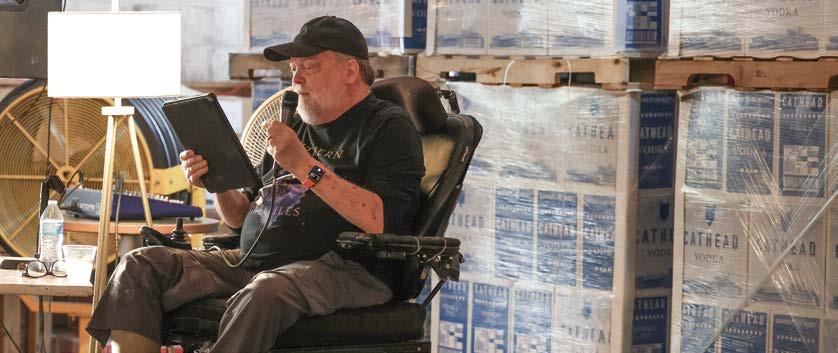






























































































































































It’s July, and summer has been with us for over a month. I’m reminded of the hit song, “It’s Too Hot” by Kool and the Gang. The lyrics remind us that “we gotta run to shelter, gotta run to shade.” It’s definitely that time of year. Temperatures are up, days are longer, and activities are popping up everywhere.
Also popping up will be afternoon thunderstorms. These random storms can bring large amounts of rain, wind, and lightning. The unpredictable nature of these storms makes preparing for them a challenge, but we at Northcentral constantly monitor all weather conditions and will be prepared to respond. Our robust maintenance and tree trimming programs position us well for these events. Prepare yourselves for these storms by keeping an eye on the weather and maintaining a good charge on all your communication devices. Any time is inconvenient to be without power, but a hot summer afternoon is one of the worst.
Your cooperative is busy as usual with projects this summer. Fiber construction for Northcentral Connect continues, as we are now providing service to over 5,000 members while adding approximately 125
Our employees will observe Independence Day, and our o ce will be closed Thursday, July 4, for the holiday. We will reopen at 8:00 am on July 5.









new subscribers a month. Least cost power from area solar providers is growing as well. This hot summer, averaged with winters should see a net benefit to Northcentral members in the range of $800,000. This is a hedge against rising wholesale power costs.
“It’s too hot,” and we may have to occasionally take shelter and find the shade, but it’s a great time of year. Enjoy it. Read a book. Take a trip in our great state. Enjoy local Blackberry Goat Cheese ice cream. We’ll keep the lights on.
Be safe. Stay cool.

by Kevin Doddridge General Manager/CEO
We are pleased to announce that the annual Northcentral Electric Cooperative Membership Meeting will be held at 2 p.m. on Wednesday, Oct. 23, 2024, in our auditorium located at 4600 Northcentral Way in Olive Branch. In addition to a review of the cooperative’s performance over the previous fiscal year, a major component of the Annual Meeting is the election of three members of the Board of Directors. This year, board members are to be elected from Districts 2, 6, and 9 of the service area. A general description of the areas served in those districts, as well as board qualifications and nomination procedures can be found in Article IV of Northcentral’s bylaws, which are posted on our website at northcentralelectric.com, or can be viewed in person at the Northcentral o ce.
Northcentral Electric Cooperative brought home two awards in the 2024 Spotlight on Excellence Awards program, a national competition among America’s electric cooperatives, sponsored by the Council of Rural Electric Communicators (CREC) and the National Rural Electric Cooperative Association (NRECA). Northcentral received a Gold Award in the Best External Event category for their exhibit in the Bridging the Gap Career Fair. The cooperative was also awarded Silver in the Best Web-Based Project Category for their HomeHero and HomeDefender video games, which were developed by Media Specialist Justin Jaggers.
Winners were recognized during the Connect conference, a national conference for communications and marketing professionals in Baltimore, Maryland in May.
“The Spotlight on Excellence Awards Program has been recognizing outstanding co-op communicators and their work for more than 35 years – that work is all the more critical in today’s evolving energy industry,” said CREC President Scott Gates, senior editor with North Carolina’s Electric Cooperatives. “These national awards are highly competitive, and we congratulate those who earned the distinction this year.”


The annual Spotlight on Excellence Awards program recognizes the best communication and marketing e orts by electric cooperatives and related organizations nationwide. More than 650 entries were submitted across 18 di erent categories, including writing, graphic design, digital communications, campaign development, and more. Faculty members from the University of Missouri, as well as noted professionals in the fields of marketing, digital communications, and newspapers judged the entries.
Organized in 1982 and comprised of rural electric communicators from around the country, the CREC seeks to advance the recognition, education and professionalism of electric cooperative communicators and their a liated organizations. This volunteer association works on behalf of more than 4,000 electric cooperative communicators across the United States.
The National Rural Electric Cooperative Association is the national trade association representing nearly 900 local electric cooperatives. From growing suburbs to remote farming communities, electric co-ops serve as engines of economic development for 42 million Americans across 56 percent of the nation’s landscape. As local businesses built by the consumers they serve, electric cooperatives have meaningful ties to rural America and invest $12 billion annually in their communities.

A notable career at Northcentral ended this spring with the retirement of Debbie Hester. Family, friends, and colleagues came together recently with a reception honoring Hester in the Northcentral Auditorium. In a joyous celebration, stories and photos were shared covering a career that spanned into three decades with the cooperative.
Hester joined Northcentral on Oct. 1, 2001, as a work order clerk in accounting. Her responsibilities included closing work orders, paying invoices, and managing fleet fuel accounts, all important roles to the day-to-day operations of the cooperative.
As with most who enjoy what they do, Hester said that she will miss the people in her Northcentral family the most. However, she looks forward to “a lot of fishing and a little travel,” and spending time with her family.
We wish Debbie the best that life has to o er in her retirement and thank her for serving the members and employees of Northcentral!


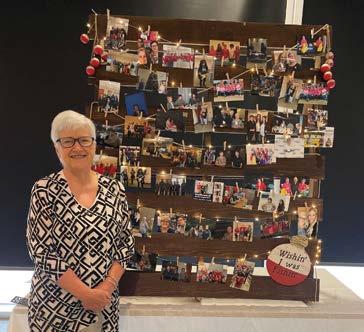


Northcentral Electric Cooperative is pleased to announce that Dee Russum, community relations representative, has completed the requirements of Leadership DeSoto. Russum was recognized along with 27 other leaders in a graduation ceremony held at Whispering Woods Conference Center on May 16.
Leadership DeSoto is a program coordinated by the DeSoto County Economic Development Council to inform future leaders of the needs and challenges facing the county and inspire them to utilize the resources available to them to make a di erence. For over 30 years, Leadership DeSoto has helped leaders become involved in community service and improving the quality of life in DeSoto County.
Candidates are nominated by organizations, employers, or individuals and must complete a lengthy application process. A selection committee then chooses participants based on the candidate’s community involvement, leadership capabilities, and potential in their respective fields. The program will choose no more than 30 participants each year.
Leadership DeSoto is a 7-month program that gives participants insight into the resources of the community by o ering sessions in leadership, economics, education, legislative issues, healthcare, local government (city, county, and state), and community service.
Participants also engage in a group project to address issues and needs facing our community. This opportunity allows participants a hands-on experience in making a di erence. Each group then presents a summary of their project to their sponsoring employers and attendees of the graduation ceremony.
Russum and her group chose a worthy community project – to shine a light on a local ministry, The Destiny Center. The group organized a senior fair, which was held at the Olive Branch Senior Citizen’s Center in April. With the generous help of area restaurants, businesses, and sponsors, the event provided lunch, gifts, and consultation to nearly 200 seniors. Destiny Center sta and volunteers were the focal point in their service of meals and transportation to area senior citizens. “It was our hope that the framework could be used to make this an annual event,” Russum said.
Russum joined Northcentral as a customer service representative in early 2015. In 2021, she joined the marketing department to take on community relations for the co-op and its fiber internet a liate, Northcentral Connect.
If you would like more information on Leadership DeSoto, please visit desotocounty.com.
The Board of Directors for Northcentral Electric Cooperative, at their regularly scheduled meeting on March 27, 2024, appointed Patricia Gri n to fill an unexpired term representing members of District 7. The board vacancy was declared upon the passing of Director Kimberly Gordon and filled pursuant to the bylaws of the cooperative.
Gri n is a native of Rhode Island and enjoyed a successful career in nursing, where she worked in a private oncology practice, hospitals, a nursing home, and pain clinics. She now lives in Marshall County with husband of 33 years, Steven, who recently retired as a human resources executive. They have one daughter, Kate, a graduate of the University of Memphis. The Gri ns own and operate an agritourism farm in Byhalia, where they have a host of rescued animals. The couple attends Byhalia United Methodist Church.
Gri n is a Master Gardner and serves on the advisory committee in agriculture for the Eddie Dixon Career and Technical Education Center in Holly Springs. She said her position with the center allows her to provide input on the future of the program, as well as “the opportunity to positively impact future farmers.” In addition to her community service, Gri n loves to read and cook in her free time.
Regarding her service to the cooperative, Gri n states, “I look forward to being an ambassador for Northcentral. I think that too often we take for granted the blessings we have. Many of the surrounding areas have reliability problems, and those problems have been ongoing for years. We are blessed that we have Northcentral Electric. The crews that are dispatched during power outages are amazing.”
District 7, as defined in the bylaws of the cooperative, covers the service area south of Pigeon Roost Creek in Marshall, Tate, and Lafayette counties.

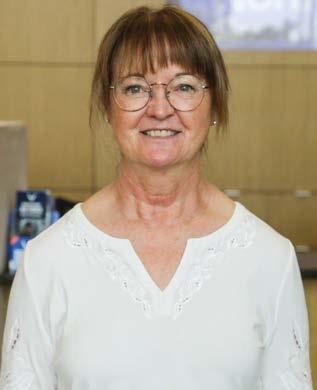




Purvis, MS - If you experience numbness or tingling in your hands, arms, legs, or feet or if you experience shooting or burning pain, this is important.
Please read this carefully

Peripheral Neuropathy is when small blood vessels in the hands, arms, feet or legs become diseased and tiny nerves that keep the cells and muscles working properly shrivel up and die.
Early-warning symptoms include tingling and numbness, mild loss of feeling in your hands, arms, legs or feet, inability to feel your feet, which increases your risk of foot-injury and falling
More Advanced Symptoms Include...
Loss of coordination & dexterity, which puts you at increased risk of accidents
Inability to feel clothing like socks and gloves
High risk of falling, which makes walking dangerous, and makes you more dependent on others
Burning sensations in your arms, legs, hands or feet that may start mild, but as nerves and muscles die, may feel like you're being burned by a blow torch.
Ignore the early warning signals long enough and you risk progressive nerve damage leading to muscle wasting, severe pain, loss of balance and a lot of staying at home wishing you didn't hurt
When every step is like walking on hot coals, sitting still may be the only thing you feel like doing But there's little joy in sitting still all day long

Now here's the scary part....
Nerve damage CAUSES cell damage Cell damage SPEEDS UP nerve degeneration
Without treatment this can become a DOWN-WARD SPIRAL that accelerates.
The damage can get worse fast Mild symptoms intensify Slight tingling, numbness or lack of feeling can turn into burning pain.
Before you know it, damage can become so bad you hurt all the time
Unless this downward spiral is stopped and nerves return to proper function - the damage to nerves and cells in the affected area can get so bad your muscles begin to die right along with the nerves and cells. And that sets the stage for weakness, loss of mobility, disability, and dependence on others.
If you have early warning signs of peripheral neuropathy, (tingling &/or numbness, loss of feeling or pain) it's CRITICAL you get proper treatment
It's critical, because with proper treatment the symptoms can often be reversed Without it, you are playing Russian Roulette with your health
Once your nerve loss reaches 85%, odds are there's nothing any doctor can do to help.
The most common method your doctor may recommend to treat neuropathy is prescription drugs

Drugs like Gabapentin, Lyrica, Cymbalta, & Neurontin are often prescribed to manage the pain But, damaged nerves and dying cells do not heal on their own
Pain pills do not restore healthy nerve function. They just mask the pain as the nerves continue to degenerate and cells and muscle continue to die.
Taking endless drugs and suffering terrible side effects that may damage your liver & kidney and create even more problems, is not a reasonable path. You deserve better. Three things must be determined to effectively treat neuropathy 1) What is the underlying cause? 2) How much nerve damage has been sustained? 3) How much treatment your condition will require?
With proper treatment, shriveled blood vessels grow back & nerves can return to proper function How much treatment you may need depends on your condition
At Purvis Chiropractic we do a complete neuropathy sensitivity exam to determine the extent of your nerve damage The exam includes a detailed sensory evaluation, extensive peripheral vascular testing, & a detailed analysis of the findings.
Dr Rob Acord, D C will be offering this complete neuropathy sensitivity exam for $47 This special offer goes away at the end of this month as we have a limited number of exam appointments available
Stop Hurting & Start Healing
Call










by Steven Ward

Fans of Coca-Cola consume the world’s most popular soft drink in di erent ways. Some drink it from cans, others like plastic bottles, and some swear by the taste of a fountain drink.
But many Coca-Cola devotees will tell you that nothing comes close to the taste of the soda in an iced cold glass bottle. A cold glass bottle of Coca-Cola just hits di erent.
The first person in the world to ever bottle Coca-Cola was Vicksburg candy store owner Joseph A. Beidenharn.
In 1894, Beidenharn — a German immigrant who ran the Biedenharn Candy Co. on Washington Street in downtown Vicksburg — started to put Coca-Cola in bottles, so he could ship it to rural areas outside the city limits.







history,
Beidenharn’s story as well as decades of Coca-Cola history, advertising, and memorabilia are at the heart of the Museum of Coca-Cola History and Memorabilia in Vicksburg.
“I think we get about 25,000 visitors a year,” said Nancy Bell, the executive director of the Vicksburg Foundation for Historic Preservation. The foundation owns and operates the museum.
One look at the museum’s visitor’s log during a three-day period shows visitors from as far away as Scotland, the Netherlands, and England. Many of those museum visitors arrive in Vicksburg via riverboat cruises on the Mississippi River.
This year marks the 130th anniversary of the first bottled Coca-Cola.








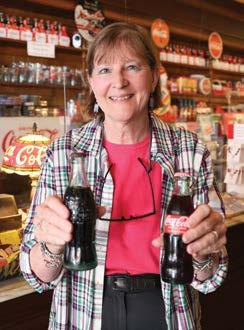

I think we get about 25,000 visitors a year.













The museum opened in 1979 and is housed in the original Biedenharn candy store building on Washington Street.
When you first walk in, you enter a shotgun blast room of a gift shop filled with Coca-Cola memorabilia for sale on one side and the other filled with bottles and cans from years gone by for display purposes.


The gift shop also features cold bottles of Coca-Cola for sale as well as ice cream for Coca-Cola floats.
On the left side and behind the gift shop is the museum — rooms filled with glass display cases of Coca-Cola memorabilia and toys, advertising from decades ago, and a reproduction of the store’s “bottling works.” The bottling works was the name for the system used to make carbonated water, wash and cap bottles, and mix the syrup and water.


One of the glass displays holds the history of Coca-Cola in bottles, including the di erent sizes and shapes of the glass bottles throughout the years.
A big chunk of the memorabilia and advertising at the museum was donated. In 1985, the museum purchased a Holly Springs resident’s huge Coca-Cola collection, Bell said.

Interestingly, just about everything in the museum is connected to the original Coca-Cola. Out of the thousands of items there, just one references “New Coke” — a 1985 experimental rebranding by the soft drink giant that failed spectacularly.







After six weeks, New Coke fizzed out, and the company pulled the plug.

























According to the museum, Joseph A. Biedenharn — born in 1866 and one of 12 children — got into the soda water business as a sideline to his candy sales.
In 1890, a salesman for Coca-Cola called on the Vicksburg company leaving a five-gallon keg of syrup on the counter. Biedenharn started selling the soda via his soda fountain. Before long, Coca-Cola sales were outpacing his own soda flavors. The sales of Coca-Cola were so high at his store, the businessman figured the drink would be popular in the country as well. He just needed to figure out how to transport the sweet tasting beverage.
Later, after the success of his bottling idea, Biedenharn and his brothers acquired franchises to bottle Coca-Cola in Shreveport
and Monroe, Louisiana, and Texarkana, Wichita Falls, San Antonio, Temple, and Uvalde, Texas.
Today, there are still Biedenharns in those areas and all over Vicksburg.
“The museum is definitely a source of pride for all of us,” said 63-year-old F.M. “Easy” Biedenharn, a financial advisor in Vicksburg.
Joseph A. Biedenharn was Easy Biedenharn’s great uncle.
“It’s amazing to think that immigrants were responsible for all of this. I think this (the museum) is great for Vicksburg and great for Mississippi,” Easy Biedenharn said.



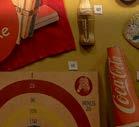
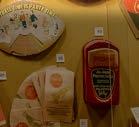


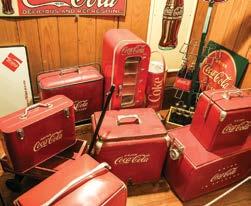






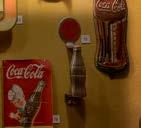



The feedback Bell gets on the museum from visitors usually revolves around the idea of nostalgia.
“They say things like, ‘I remember growing up with this.’ ‘This brings back such great memories,’” Bell said.
Back in 2001, Coca Cola’s advertising slogan was “Life tastes good.”
Feeling good seems to be what the Museum of Coca-Cola History and Memorabilia is all about.
A wide variety of original Coca-Cola advertising and memorabilia is on display to allow the visitor to follow the evolution of “The Pause That Refreshes!”
The restored candy store and o ce area will take you back to a simpler, sweeter time with furnishings and displays from the 1890s. Visitors can buy ice cream, fountain and bottle Cokes, Coke floats, and a wide selection of Coke souvenirs.














by Bonnie A. Coblentz
Cotton planting has all but drawn to a close in Mississippi for the year, with the state seeing an increase to an expected 500,000 acres in 2024.
The U.S. Department of Agriculture made that acreage estimate and said the crop was 94% planted by June 9, 2024. Of that acreage, 80% was either in good or excellent condition, with 19% in fair and just 1% in poor condition.
Brian Pieralisi, cotton specialist with the Mississippi State University Extension Service, said cotton planting began in late April in most places.
“The planting window depends on where you are in the state,” Pieralisi said. “We got a lot of cotton planted in those first few weeks, then there was a gap where some people were finished, and others couldn’t get in the field because of wet pockets.”
The majority of the crop was planted by mid-May, but growers struggled a bit to get the last 20% in the ground.



Pieralisi said the crop was slated to take o by mid-June.
It takes a while for the plants to establish roots, and they don’t look great during that time,” he said. “In the next few weeks, cotton will have reached 8-12 nodes, and they really start to get their feet under them at that point.”
Alex Deason, extension agent in the Delta region, said there is always a di erence between cotton grown in the north Delta and the south Delta.
“Cotton in the south Delta had very few problems as it came up, but recent rains have prevented growers from doing needed weed control or addressing fertility concerns,” Deason said. “The north Delta battled rains at planting, which caused some stand issues.”
Josh Tilley, extension agent in Lowndes County, said cotton in the eastern part of the state had adequate soil moisture, soil temperature and dry weather days to get it planted and has emerged without any major problems.


“Only time will tell how productive the cotton crop will be this year,” Tilley said. “Even though cotton is a heavily managed crop, the numbers worked out better for most growers to shift toward planting more cotton rather than corn or soybeans this year.”
Tilley said area cotton growers are also benefiting from a relatively new and well managed cotton gin, and another nearby gin is making some improvements.
“Between these two gins, they should be able to handle the increased acre production,” he said. “That always helps give farmers peace of mind about getting their cotton out of the field and ginned.”
Will Maples, MSU Extension agricultural economist, said the state’s increased cotton acreage is due to lower corn prices. The acreage expected in Mississippi is in line with recent cotton acreage and up from the 390,000 acres grown in 2023.

Despite the increased acreage, cotton prices have traded lower than in 2023.
Only time will tell how productive the cotton crop will be this year. Even though cotton is a heavily managed crop, the numbers worked out better for most growers to shift toward planting more cotton rather than corn or soybeans this year.

“December cotton futures have traded around $.75 to $.80 for the past month, down about $.05 from earlier in the year,” Maples said. “This decrease is driven by the expectation of larger supplies and weak demand.

“The weaker market might have caused some producers to shift their planting intentions away from cotton, so we may see slightly lower acres than projected in the April Prospective Plantings report from USDA,” he said.


Maples said demand for cotton continues to weigh down prices and is expected to for the near future.

“Any price rallies throughout the summer must be driven from the supply side, which means weather problems,” Maples said.


















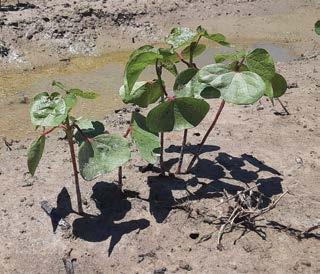












































Nobody in Mississippi would argue that July is when Satan is in charge of thermostats, and he sets them all to “hell,” then sits back and laughs. The temperatures are rising, and July dutifully gives us a taste of what August holds. But the middle child of summer also brings celebrations and vacations. Our January dreams of swimming pools, ice cold sweet tea, tomato sandwiches, and home-churned ice cream have finally arrived.
When I was a kid, my dad’s family reunion was the last Sunday in July — every year, rain, or shine. We would go to my Uncle Bob’s cabin on a lake in western South Carolina. The grown-ups in our family would spend the entirety of the weekend at my Mamaw’s and my Aunt Annie’s houses shucking corn, peeling potatoes, and boiling eggs. Our job was to stay outside and not slam the screen door as we left. On Sunday morning we trotted ourselves to Sunday school; it was Mamaw’s orders whether the adults went or not. When we returned, the house smelled of deviled eggs, potato salad, fried corn, and fried chicken. And the biscuits, oh my word!
Everything would be loaded up into cars, marching orders were given as to who was responsible for what, who was picking up the ice, and who was going by the market for a couple of cantaloupes. The rule was we waited 30 minutes after we ate to jump into the lake, and we had to wait for a dad, or an uncle, or a grown-up cousin to load up their .22 caliber gun so they could take a crack at the moccasins. We’d hear “SNAKE!” and that was code for head to shore. Were we deterred? Heck no. Right back into the water we’d go. There’s no way on God’s green earth I’d ever go back and redo THAT portion of those days, but, oh, what I wouldn’t give to relive the rest.
I hope you’re making some wonderful summer memories. I hope your first watermelon and tomato sandwich of the season was memorable enough to make you long for summer next year.
In a medium bowl, mix together 2 packages grape Jell-O 2 cups boiling water
Stir until dissolved. Then add: 1 large can crushed pineapple (undrained)
1 can blueberry pie filling
Mix all together. Pour into a 9 by 13 casserole dish; cover, and refrigerate until firm.



Serves 10-12


Allow to set overnight if you want a firmer salad, but it’s ready to eat as soon as the Jell-O is set.
Combine in a medium bowl: 8 ounces cream cheese, softened 1 cup sour cream ½ cup sugar
1 teaspoon vanilla
Pour over set Jell-O mixture. Sprinkle with 1/2 cup chopped pecans if desired.


Serves at least 12
Use a store-bought brownie mix to make the base of this cake, but be prepared to use muscle to cut it if you do. The taste is wonderful, but frozen brownie is hard to cut. If you have a caky brownie recipe, try it. Or use a cake mix.
1 cup all-purpose flour
¼ cups cocoa powder
2 teaspoons baking powder
¼ teaspoon salt

¾ cup granulated sugar
1 egg
1⁄3 cup vegetable oil
1⁄3 cup milk
Sift the flour, cocoa powder, baking powder, and salt together in a medium bowl. Add sugar and stir. Mix egg, milk and oil together, and add to dry ingredients. Mix with a spoon until all combined. Bake in a 9 by 13 glass pyrex dish in the oven at 325 degrees for about 20 minutes, or until done. Remove and cool. Stick in freezer for about 30 minutes until ready to assemble cake.
To assemble:
Use your favorite pink ice cream (peppermint, strawberry, or cherry cordial) and plop softened ice cream onto cake. Spread evenly over cake. Freeze for 3 or 4 hours. Remove and top with whipped cream, or Cool-Whip. Garnish with something appropriate, like crushed peppermint, fresh strawberries, or chopped up maraschino cherries.


Makes 24 to 30 cupcakes
A fast, easy coconut cake. I make 24 cupcakes and a little 6” snacking cake. Split the cake and frost the middle and the top.
3 large eggs
8 ounces sour cream
1⁄3 cup water
8 ounces cream of coconut (in the can - NOT coconut milk)
½ teaspoon vanilla extract
1 white cake mix
Beat eggs for about 2 minutes until light. Add sour cream, 1/3 cup water, cream of coconut, and vanilla; beat well to combine. Add cake mix, beating at low speed just until blended. Beat at medium for 2 minutes. Portion into 24 cupcake papers, and a sprayed 6” cake pan or pour batter into a greased and floured 9 by 13 pan to make a sheet cake.
Bake at 325 degrees for 35 to 40 minutes or until a wooden pic inserted in center comes out clean. Let cupcakes cake cool completely before frosting.
To Frost:
Use your favorite white frosting recipe — buttercream, or meringue, or even Cool-Whip — or use a store-bought white frosting, and frost cupcakes and cake.
To Top:
Combine 2 packages of frozen coconut and ½ a package of sweetened flaked coconut, 2 tablespoons of water, and 2 tablespoons of sugar in a medium bowl. Let set a few minutes then either dip frosted cupcakes into coconut to cover, or use hands to sprinkle coconut on top.

by Vicki Leach
Vicki Leach is a full-time chef/culinary instructor at Mississippi State University in the Department of Food Science, Nutrition, and Health Promotion. She teaches Science of Food Preparation, Foodservice Organization, and Quantity Food Production. She also serves as the food service coordinator for First Baptist Church in Starkville, where she attends with her husband, Rob. She has four children and five grandchildren, and lives in a 130-year-old farmhouse that speaks to her old soul. She still has the first cookbook she ever owned.
Honoring Our Home Front Family Dinner Benefit. July 19. Diamondhead. From 6 p.m. to 11 p.m. at the Diamondhead Country Club, 7600 Country Club Circle. Join us in recognizing those who secured the home front while our military members were deployed. Tickets are $100. All proceeds will fund Crusaders for Veterans Inc. in their efforts to promote respect for our military and to provide resources for those struggling. Various sponsorship packages available. Details: 217-201-1330.
Frost Bridge Camp Meeting. July 19 to 28. Waynesboro. This Bible-based family camp meets once a year. The camp is located at 1455 Matherville Frost Bridge Road. The rates are reasonable for dining hall meals, boys and girls dorms, and newly remodeled hotel rooms for adults. Join us for service or stay the whole week. Bible study daily at 9 a.m. in small groups for adults, teens, and children. Morning worship begins at 10:30 a.m. and evening worship at 7 p.m. The music is led by the Isbell Family and enlightening preaching by Evangelists Dr. David Smith and Dr. Mark Weeter. Youth rates to stay the entire 10 days is only $150 for ages 12-18 staying in the dorm. Hotel rooms beginning at $15 a night and RV full hookups for $10 per day. Details: 205292-9176 or frostbridgecamp.com
Calhoun County Sacred Harp Singing Convention. Aug. 10. Vardaman. The event will be held at Mt. Herman Primitive Baptist Church, 163 CR 427, also known as Hollis Switch Road. Singing from starts at 10 a.m. A potluck lunch will be available in the church’s fellowship hall. Details: 662-507-9434.
Big Gospel Singing Jubilee. Aug. 10. Magee. Magee High School Auditorium, 501 Choctaw St. Featuring the World Famous Hinson Family, Terry Joe Terrel, Tim Frith & the Gospel Echoes, and Revelations. Details: 601-906-0677.
Mississippi Sacred Harp Singing Convention Aug. 24 and 25. Forest. The event will be held at Antioch Primitive Baptist Church, 6931 Hwy 21. Singing starts at 10 a.m. both days with potluck lunches to follow in the church’s fellowship hall. Details: marksdavis19@gmail. com
Clarke County Clarke Fest. Sept. 28. Quitman. 8 a.m. to 4 p.m. The day will include a car show, live music, food, feel and touch event, arts and crafts vendors, and a kid’s zone. Archusa Water Park. Details: 601-776-5701.






















A few weeks ago, I planned to take a day o from anchoring the 4 p.m. news on WJTV and drive up to Leflore County and do a story about the bridge over the Tallahatchie River in honor of Bobbie Gentry’s song, “Ode to Billie Joe.” The song was about the boy who jumped o the Tallahatchie Bridge on or about the third of June on “another sleepy, dusty Delta day.” When I told news producer Zach Mason that I planned to find the bridge Billie Joe McAllister jumped o , his face told me he was waiting for me to finish the sentence. Only,
The fair is a mile marker in our year. As is the third of June. Both uniquely Mississippi. But more and more, you must explain what they are to the younger folks as time runs on by.
I had finished. If he knew the song (which I assumed everybody did) he’d have understood the whole story. But evidently, he didn’t know the song. So, I quickly counted on my fingers how many years it had been since 1967 when “Billie Joe” came out. I was shocked. I didn’t realize. No wonder Zach didn’t know the song. He wasn’t even born yet. His parents probably weren’t either!
The first time I realized that time runs while we just walk was back in the1980s in my capacity as a weatherman. I was invited to talk to a group of third graders about severe weather. We discussed tornadoes and where to go to stay safe and then we shifted to hurricanes. I told them about Hurricane Camille (August 1969) as if these youngsters were as familiar with it as I was. “Mister, we’re not that old,” filtered up from the giggles.
I bring all this time-passing stu up because in just a few weeks it will be time for the Neshoba County Fair again. It can’t be a year already? But like the saying goes, “Time flies when you’re having fun.” And when you live long enough, you discover you don’t even have to be having fun for time to fly.
The fair came up when a friend of mine who does freelance media consulting put me on a conference call with a political advisor friend of his, and the conversation turned to the fair and how this will be an exciting year because of the national elections. Everybody remembers after Ronald Reagan announced he was running for President his very

next speech was at the Neshoba County Fair. (You DO remember that, don’t you? Or should I count years again?) And ever since then, the fair gets an unusual amount of attention during election season.
By the way, I was told all those political posters nailed on the light posts at the fair all go up in one day. The poster posters line up and get a signal and then it’s the Neshoba County Fair free-for-all as everybody shoots for the best spots first.
The fair is a mile marker in our year. As is the third of June. Both uniquely Mississippi. But more and more, you must explain what they are to the younger folks as time runs on by.


by Walt Grayson
Walt Grayson is the host of “Mississippi Roads” on Mississippi Public Broadcasting television and the author of two “Looking Around Mississippi” books and “Oh! That Reminds Me: More Mississippi Homegrown Stories.” Walt is also a reporter and 4 p.m. news anchor at WJTV in Jackson. He lives in Brandon and is a Central Electric member. Contact him at walt@waltgrayson.com.








